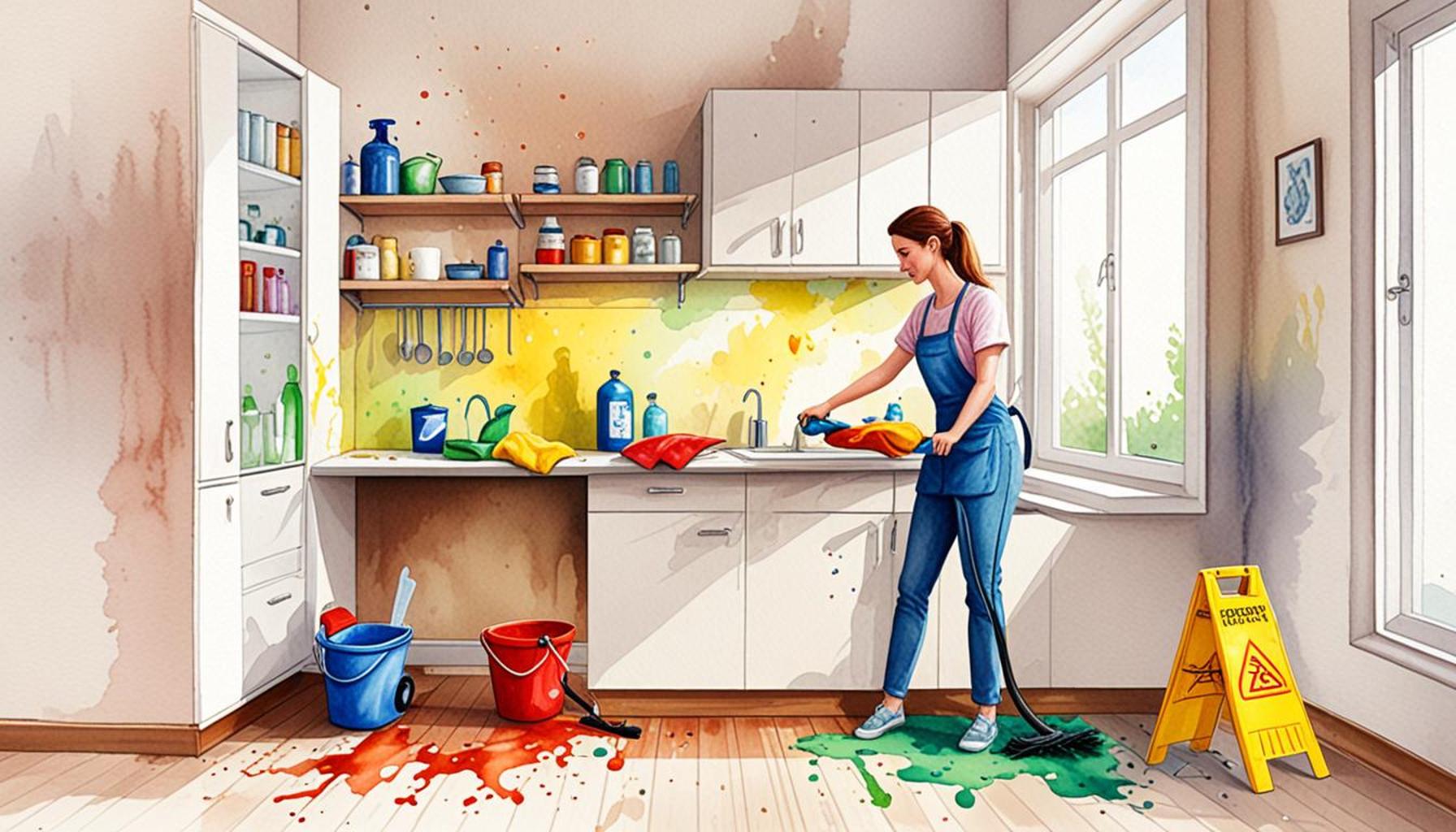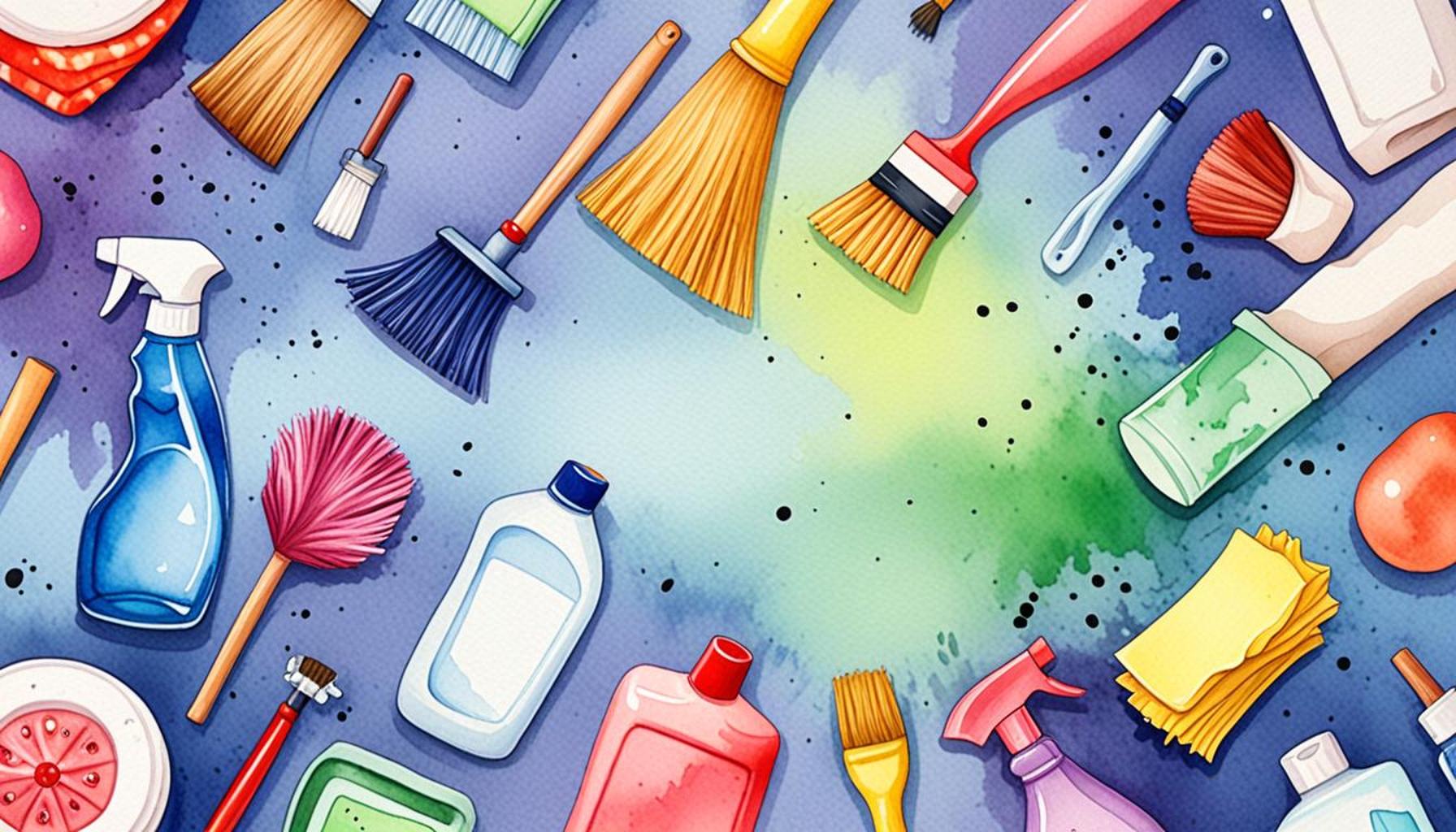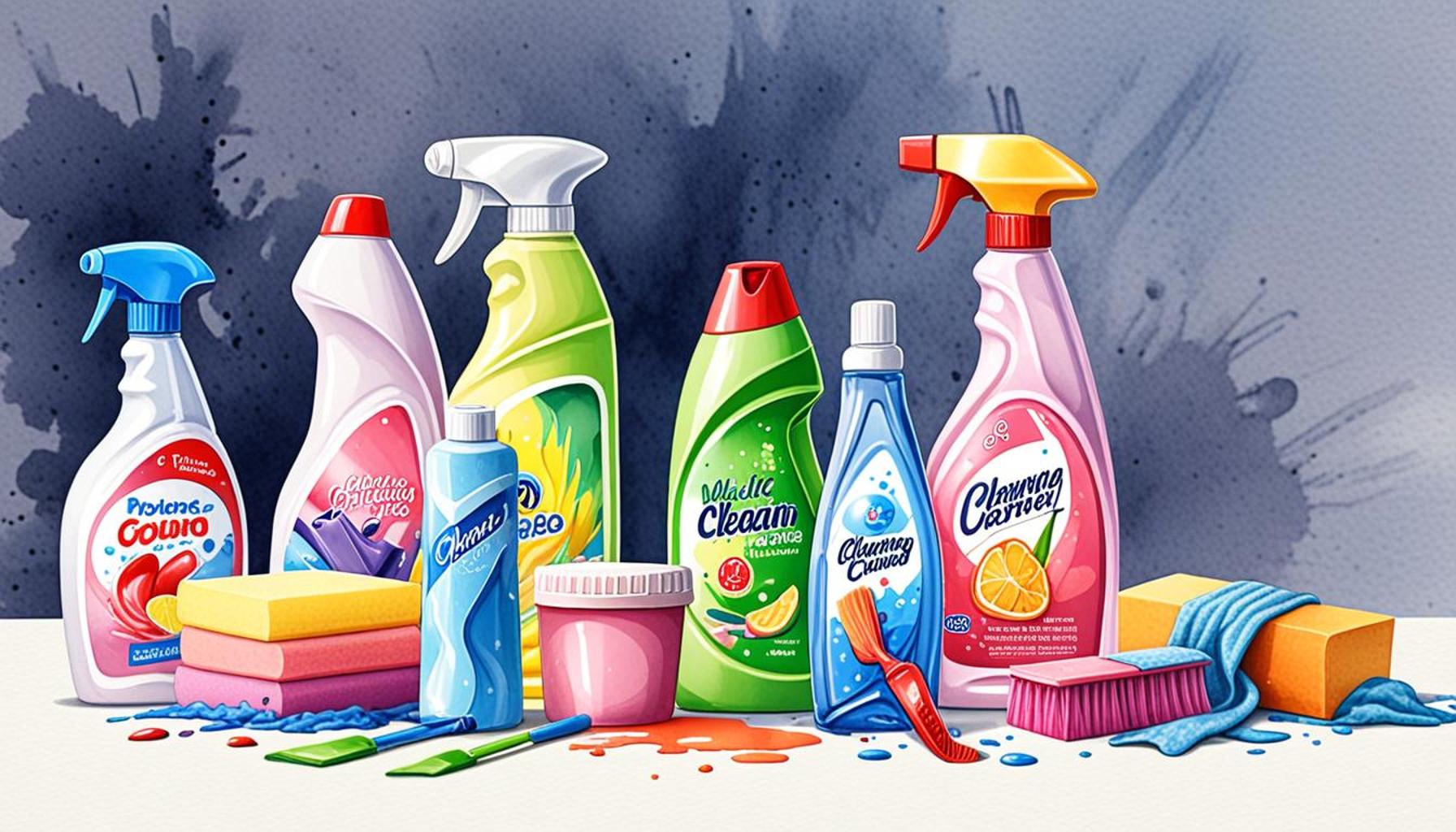The relationship between cleaning frequency and the durability of surfaces in residential environments

The Significance of Cleaning Frequency
In residential environments, the importance of cleaning frequency cannot be overstated. It plays a pivotal role in maintaining surfaces, ultimately influencing their longevity and appearance. Regular cleaning not only preserves aesthetic beauty but is also essential for mitigating wear-and-tear on various materials. This understanding is vital for homeowners aiming to safeguard the lifespan of their investments, reducing the need for costly repairs or replacements over time.
Consider the various surfaces commonly found in homes:
- Hardwood floors: These surfaces are beloved for their natural beauty, but they require regular cleaning to avoid scratches and wear. Dust, dirt, and abrasive particles can cause significant damage if left unchecked. Weekly sweeping and monthly mopping with a pH-balanced cleaner can help maintain their luster.
- Granite countertops: While granite is a durable material, it can be prone to stains if not properly maintained. Regular sealing, every year or two depending on usage, along with daily wipe-downs, can prevent the penetration of spills like wine or fruit juice, which can mar the stone’s finish.
- Tile and grout: These surfaces are functional but can become unattractive due to mildew and grime buildup. Frequent cleaning, at least once a week, along with occasional deep cleaning using a steam cleaner, can help preserve the grout lines and avoid deterioration that might lead to costly replacements.
The frequency of cleaning affects not just aesthetics but also the functional integrity of these surfaces. Here are some key considerations:
- Daily versus weekly cleaning: Adopting a daily quick-clean routine, such as wiping down kitchen counters and vacuuming high-traffic areas, can drastically reduce the buildup of dirt and grime. This proactive approach not only maintains cleanliness but extends the life of the surfaces.
- Seasonal deep cleaning: While weekly cleaning focuses on visible dirt, seasonal deep cleaning helps to remove hidden contaminants that regular cleaning may miss. For instance, cleaning air vents and behind large appliances can improve indoor air quality and prevent dust accumulation.
- Cleaning products: The choice of cleaning products can either enhance or detract from surface durability. It is crucial to use pH-balanced and manufacturer-recommended products for delicate surfaces. Harsh chemicals can cause etching or discoloration, negating the investment made in high-quality materials.
Although many homeowners recognize the necessity of cleaning, few understand its direct impact on surface durability. Regular maintenance routines not only enhance the appearance of a home but also contribute to the health and safety of its occupants. A well-maintained home can resist allergens, bacteria, and other harmful agents, creating a more pleasant living environment. This article will delve deeper into how cleaning practices can affect the durability of different surfaces in residential settings and offer insightful tips on maintaining them effectively.
DISCOVER MORE: Click here to learn how a cleaning schedule can boost your productivity

Understanding the Impact of Cleaning Frequency on Surface Durability
When considering the longevity of various surfaces within a home, it’s essential to examine the relationship between cleaning frequency and overall durability. Each material has its own requirements and responses to wear, making it crucial for homeowners to implement a tailored cleaning regimen. Regular attention to cleaning not only enhances the immediate aesthetic of a space but can also fortify the surfaces against premature degradation.
Everyday life inevitably introduces elements that can lead to the deterioration of materials. For instance, consider the number of footfalls on a carpet or spills on kitchen counters. The accumulation of dirt, grease, and grime can create a microenvironment that accelerates wear. Here are several vital points illustrating why consistent cleaning is a necessity rather than a choice:
- Prevention of Surface Damage: Frequent cleaning prevents the buildup of harmful substances that can scratch, dull, or discolor surfaces. For example, soil and grit can act like sandpaper on hardwood floors; thus, consistent sweeping or vacuuming keeps these floors looking new for longer.
- Reduction of Allergenic Factors: Dust mites, mold spores, and other allergens can accumulate on surfaces if not regularly addressed. Cleaning at least weekly can help mitigate health issues, particularly for families with allergic sensitivities, ensuring a healthier indoor environment.
- Cost-Efficiency over Time: While it may seem like a chore, regular cleaning can save considerable money in the long run. Surfaces that are well maintained have reduced chances of significant damage and thereby lower the frequency and costs of repairs or replacements.
The durability of materials often correlates with the cleaning methods utilized. For instance, soft fabrics may require more gentle detergents and techniques whereas hard surfaces like stone might withstand harsher solutions. Implementing the right methods for the corresponding materials is essential for preserving their integrity:
- Soft Surfaces (e.g., Carpets, Upholstery): These should be vacuumed at least once a week, with deep cleaning scheduled every 6 to 12 months depending on foot traffic.
- Hard Surfaces (e.g., Tiles, Wood): Regular dusting or sweeping should accompany a bi-weekly mopping routine to prevent damaging build-up. Occasional polishing or sealing is advised to protect against wear.
- Other Considerations: Areas such as bathrooms, where moisture can promote mold growth, require frequent cleaning—ideally every few days to maintain hygiene and surface integrity.
In essence, the frequency of cleaning is directly proportional to the durability of residential surfaces. Neglecting regular maintenance may not yield immediate visible damage, but over time, the cumulative effects can be detrimental. By investing in a consistent cleaning schedule and understanding the unique needs of each surface, homeowners can ensure that their living spaces remain beautiful and durable for years to come.
| Advantage | Description |
|---|---|
| Enhanced Longevity | Regular cleaning significantly reduces wear and tear, prolonging the lifespan of surfaces. |
| Improved Hygiene | Frequent cleaning eliminates harmful bacteria and allergens, promoting a healthier living environment. |
| Cost-Effectiveness | Investing in cleaning not only protects your surfaces but can reduce the need for expensive repairs or replacements. |
| Aesthetic Appeal | Regular maintenance keeps surfaces looking fresh and new, enhancing the overall ambiance of your home. |
The relationship between cleaning frequency and the durability of surfaces in residential environments is a pivotal topic for homeowners seeking to maintain their properties. As surfaces endure daily use and exposure to various elements, cleaning them becomes more than a chore; it’s an investment in a home’s future. High-traffic areas, such as kitchens and hallways, often require a more stringent cleaning regime. Consistent care not only addresses immediate dirt and grime; it also fortifies surfaces against degradation. When dirt accumulates, it can lead to scratches and marks that accelerate wear, thus shortening the lifespan of flooring, countertops, and other surfaces. Moreover, the benefits of maintaining a diligent cleaning schedule extend beyond just durability. Improved hygiene and aesthetic enhancements are immediate rewards. Surfaces that are regularly cleaned foster a healthier environment, free from the clutter of bacteria and allergens. For homeowners, the question of cleaning frequency is not merely academic. It represents an opportunity to embrace best practices that maximize the value of their living space while simultaneously doing their part for home health.
DISCOVER MORE: Click here to enhance your cleaning efficiency
Strategies for Maintaining Surface Durability through Cleaning Frequency
Understanding the intricacies of how cleaning frequency influences the durability of various residential surfaces opens the door to effective maintenance strategies. Homeowners can harness practical approaches to extend the life cycle of common materials found within their living spaces.
One emerging insight is the potential impact of environmental factors on the necessitated frequency of cleaning. For example, homes located in urban areas might experience more pollution-related debris, leading to a faster rate of surface degradation. Conversely, homes in rural settings could contend with different challenges, including dust and allergens from the outdoors. Recognizing these conditions is essential to tailoring a routine that effectively caters to a specific environment’s demands.
Adapting Cleaning Techniques to Different Environments
In urban environments, surfaces may require more frequent cleaning, potentially on a daily basis, to counteract the adverse effects of grime and pollutants. This might mean incorporating a quick dusting and surface wipe-down as part of a morning routine. The use of microfiber cloths has garnered attention due to their efficiency in capturing particles without the need for additional chemicals, promoting a healthier indoor atmosphere.
In contrast, rural homes may find that a regular bi-weekly cleaning schedule suffices, although specialized care is still necessary for areas prone to mold, such as basements or spaces that experience high humidity. Utilizing food-safe cleaning solutions can promote sustainability while maintaining a safe environment for families, especially those with children or pets.
The Science Behind Cleaning Frequencies
Various studies have shown that homes with systematic cleaning schedules report lower incidences of surface damage compared to those lacking such discipline. For example, research conducted by the American Cleaning Institute indicates that cleaning surfaces routinely decreases the chances of costly damages by up to 75%. In addition, a notable finding reveals that surfaces maintained with appropriate care can last up to 50% longer than those subjected to neglect.
- Granite and Natural Stone: These durable surfaces can benefit from bi-annual sealing to maintain their integrity, combined with weekly cleaning using pH-balanced solutions to avert dullness.
- Painted Walls: Regular dusting followed by touch-ups and deep cleans at least once a month preserve both the visual appeal and durability of paint, which can otherwise chip or fade over time.
- Appliance Care: Kitchen appliances, when cleaned regularly, are more likely to last longer due to a reduction in food residue and buildup, which can cause breakdowns over time.
Moreover, utilizing advanced cleaning technologies can streamline the maintenance process and fortify surfaces against wear. Robotics, particularly vacuum cleaners equipped with sensors to detect different flooring types, have gained popularity and offer exceptional convenience. They not only alleviate the routine burden of maintaining clean floors but also enhance surface durability, adapting cleaning frequency based on actual usage patterns.
As homeowners refine their cleaning habits, the challenge often lies in balancing effort and time with practicality. Hence, creating a cleaning calendar that outlines specific tasks, areas, and frequencies encourages a systematic approach. By understanding the fundamental relationship between cleaning frequency and surface durability, individuals can take proactive steps to secure the inspired longevity and beauty of their residential spaces.
DISCOVER MORE: Click here to learn how mindfulness can transform your time management</
Conclusion: Sustaining Surface Longevity through Strategic Cleaning
In exploring the relationship between cleaning frequency and the durability of household surfaces, it becomes clear that consistency is fundamental. The studies suggest that a well-planned cleaning regimen can prevent unnecessary wear and tear, thereby extending the lifespan of materials commonly found in residential settings. By grasping the significance of various environmental factors and adjusting cleaning practices accordingly, homeowners can create an environment that not only looks good but stands the test of time.
Urban dwellers must be particularly vigilant, as pollutants and grime necessitate frequent cleaning to preserve the integrity of their surfaces. In contrast, those in rural areas can adopt a less intense approach without sacrificing care for spaces prone to moisture and allergens. It is evident that adaptability in cleaning routines tailored to specific contexts can yield remarkable benefits.
Moreover, the advent of technology offers novel solutions to maintain these practices effortlessly. The use of innovative cleaning devices such as robotic vacuums and eco-friendly products empowers homeowners to efficiently uphold their space, making it both functional and stylish.
As you consider your cleaning habits, remember that establishing a regular schedule will not only enhance the aesthetic appeal of your home but also significantly mitigate potential damage. With a strategic approach to cleanliness, homeowners can invest in the longevity and resilience of their surfaces, ultimately fostering a safer and more inviting home environment. In reflecting on this critical relationship, we invite you to delve deeper into your cleaning routines and discover how they can be optimized for lasting results.


